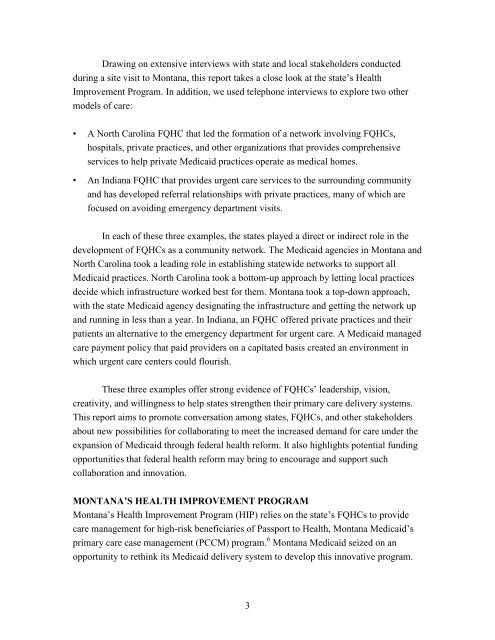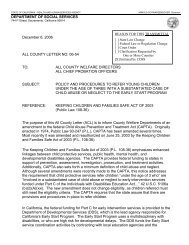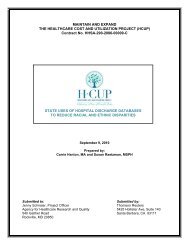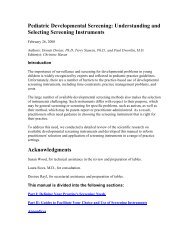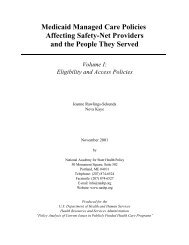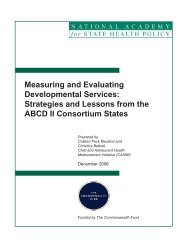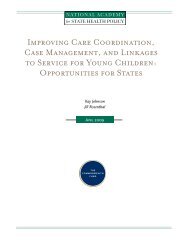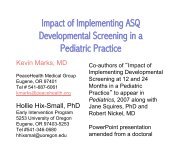Developing Federally Qualified Health Centers into Community ...
Developing Federally Qualified Health Centers into Community ...
Developing Federally Qualified Health Centers into Community ...
You also want an ePaper? Increase the reach of your titles
YUMPU automatically turns print PDFs into web optimized ePapers that Google loves.
Drawing on extensive interviews with state and local stakeholders conducted<br />
during a site visit to Montana, this report takes a close look at the state’s <strong>Health</strong><br />
Improvement Program. In addition, we used telephone interviews to explore two other<br />
models of care:<br />
• A North Carolina FQHC that led the formation of a network involving FQHCs,<br />
hospitals, private practices, and other organizations that provides comprehensive<br />
services to help private Medicaid practices operate as medical homes.<br />
• An Indiana FQHC that provides urgent care services to the surrounding community<br />
and has developed referral relationships with private practices, many of which are<br />
focused on avoiding emergency department visits.<br />
In each of these three examples, the states played a direct or indirect role in the<br />
development of FQHCs as a community network. The Medicaid agencies in Montana and<br />
North Carolina took a leading role in establishing statewide networks to support all<br />
Medicaid practices. North Carolina took a bottom-up approach by letting local practices<br />
decide which infrastructure worked best for them. Montana took a top-down approach,<br />
with the state Medicaid agency designating the infrastructure and getting the network up<br />
and running in less than a year. In Indiana, an FQHC offered private practices and their<br />
patients an alternative to the emergency department for urgent care. A Medicaid managed<br />
care payment policy that paid providers on a capitated basis created an environment in<br />
which urgent care centers could flourish.<br />
These three examples offer strong evidence of FQHCs’ leadership, vision,<br />
creativity, and willingness to help states strengthen their primary care delivery systems.<br />
This report aims to promote conversation among states, FQHCs, and other stakeholders<br />
about new possibilities for collaborating to meet the increased demand for care under the<br />
expansion of Medicaid through federal health reform. It also highlights potential funding<br />
opportunities that federal health reform may bring to encourage and support such<br />
collaboration and innovation.<br />
MONTANA’S HEALTH IMPROVEMENT PROGRAM<br />
Montana’s <strong>Health</strong> Improvement Program (HIP) relies on the state’s FQHCs to provide<br />
care management for high-risk beneficiaries of Passport to <strong>Health</strong>, Montana Medicaid’s<br />
primary care case management (PCCM) program. 6 Montana Medicaid seized on an<br />
opportunity to rethink its Medicaid delivery system to develop this innovative program.<br />
3


